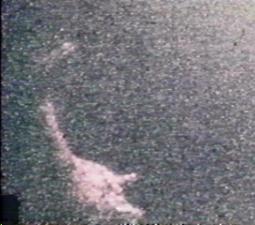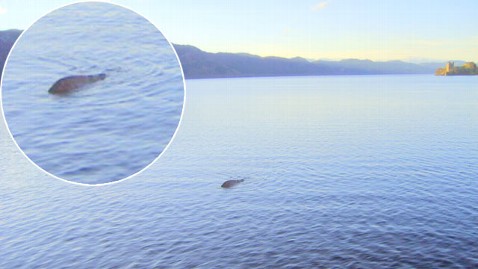

Location: Scotland Map
Loch Ness is the most easterly and largest of the three elongated freshwater lochs in the Great Glen, which completely bisects the Scottish Highlands from the Scottish Sea to the North Sea in a straight line running northeast. From the top, tributary to the River Oich, at Fort Augustus, about midway through the Great Glen, Loch Ness stretches 22 miles north-east to discharge into the River Ness at Lochend, eleven miles south-west of the coast at Inverness. Measured by the water surface of 56.4 km², Loch Ness is the second largest lake in Scotland after Loch Lomond. Because of its depth, it has the largest volume of water of any Scottish lake.
The Great Glen is the result of strike-slip movement of adjacent
tectonic plates and later glacial erosion of the unconsolidated rock
in the fault zone. Loch Ness is therefore about 37 km long, but on
average only 1.5 km wide. Towards the end of the Ice Age around
12,000 years ago, Loch Ness was probably still a sea bay. When the
land near Inverness, freed from glacial ice, rose, access to the sea
was cut off.
The greatest depth of the lake is 230 m.
Measurements that resulted in a depth of 247 m or 325 m are
attributed to interference in the sonar measuring devices, are
considered unreliable and could not be confirmed even in recent
measurements. Loch Ness is the second deepest lake in the British
Isles after Loch Morar (310 m), but has the greatest mean depth at
132 m. Unlike other Scottish lochs, most of the loch is very deep.
In fact, just under half (47.7%) of the loch's area has water depths
greater than 152m. Only 13.6% of the loch's area is shallower than
30m, while these relatively shallow areas at Loch Lomond account for
68% and make up 42% of the water surface at Loch Morar.
Deposits from the River Foyers divide Loch Ness roughly down the
middle into two deep basins. The deposits on the ground grow by an
average of about one millimeter every year. The steeply sloping
walls of the lake are still bathymetrically significant. In some
sections, the lake reaches a depth of 53 m less than 15 m from the
shore, which corresponds to a slope declining at an angle of 75°.
Loch Ness has been part of the Caledonian Canal since 1822. This
was built as a link between the Atlantic coast and the North Sea
coast in order to achieve shorter transport times for industrial
goods and to avoid the storms at sea in the north of Scotland. For
the construction of the canal, the water level in the lake was
artificially raised by about three meters, which also increased the
length and width of the lake.
Apart from a small island in
the delta of the River Foyers, there are no other natural islands in
Loch Ness. To the south-west of the lake is Cherry Island, a Bronze
Age artificial island (a so-called crannog) some 4000 years old. Due
to the artificially increased water level, only a fraction of Cherry
Island's original extent is visible today. Another former Crannóg -
Dog Island - was completely submerged by the raising of the water
level.
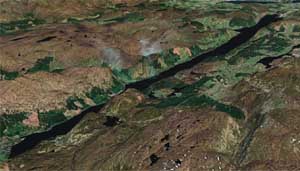
Loch Ness is one of the most fishy waters in Great Britain. Salmon,
eels, minnows, trout, pike and stickleback live in the lake. Like Loch
Oich and Loch Lochy, Loch Ness provides autumn spawning grounds for
Atlantic salmon migrating from the sea. In 1982, three specimens of this
species were caught in Loch Ness at a depth of around 220 meters -
setting a depth record for British freshwater lochs. In 2000, the record
catch of a 7.5 kg trout was achieved.
Oak, ash, rowan, hazelnut
and pine grow in the forests around Loch Ness. However, most of the oaks
were felled in the early 19th century to build the Caledonian Canal.
Although Loch Ness is very cold even in the warm season, some swimmers
have crossed the length of the loch (about 37 km). Record holder is
David Morgan: He managed the single distance in 10 hours and 59 minutes
and the double in 23 hours and 50 minutes. On September 29, 1952, John
Cobb's attempt to break the then world water speed record with a
motorboat in Loch Ness ended fatally. Cobb's Speedboat Crusader lifted
off the surface at over 200 mph and broke up on rebound.
The Loch
Ness Marathon has been held every autumn since 2002. It starts at
Whitebridge and follows a narrow road along the south-east bank. After
Dores the line leaves the lake for Inverness. The last few miles follow
the south-east bank of the Ness, then cross a stone bridge in Inverness
and back to Bught Park on the other side. In 2011 about 2500 active
people took part in this marathon.
Approximately 1700 meters north east of the mouth of the foyer in Loch
Ness is Boleskine House, overlooking the loch. The building was occupied
by the occultist Aleister Crowley from 1899 to 1913. From the early
1970s to 1991 it was owned by rock musician Jimmy Page of the band Led
Zeppelin and was also used for some scenes in the musical film The Song
Remains the Same.
On December 31, 1940, a Vickers Wellington
Royal Air Force twin-engined bomber crashed into the lake, killing one
crew member. The wreck of the machine was recovered from the lake in
1985, then restored and is now on display at the Brooklands Museum in
Brooklands, southern England.
The company Kongsberg Maritime has
been surveying the lake bed with sonar since April 2016 and found the
suspected Nessie dummy from the shooting of the film The Private Life of
Sherlock Holmes from 1970 on the bottom.
The Loch Ness Monster, also known as Nessie, is said to be an animal
or group of animals that live in Loch Ness, a lake in Scotland, near
the city of Inverness. Nessie is usually described as a plesiosaur,
measuring up to 20 meters in length. Their existence could be
explained as a so-called cryptid, an animal that is inaccessible to
humans and therefore unexplored, comparable to Bigfoot and Yeti.
However, most scientists and experts explain the reports of
Nessie's existence as intentional or unintentional false reports or
misidentifications of common animals. Regionally, the myth is an
important source of income as the loch is one of the main
destinations for tourism in Scotland. Nessie is occasionally covered
in the press, especially during the summer slump.
In the UK,
since 1934, if the Loch Ness Monster does exist, there has been a
law protecting the monster.
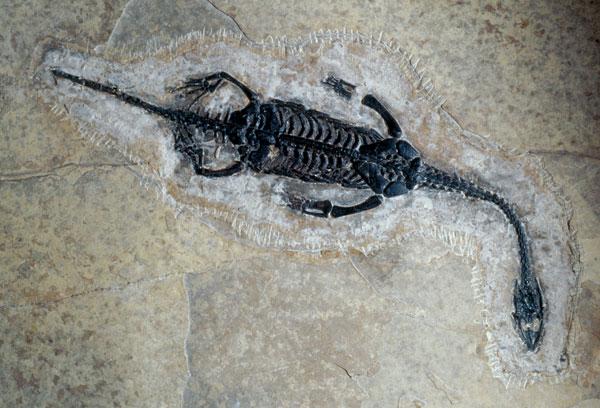

The first known mention of the sea monster dates back to the year
565. In the Vita Columbae of Abbot Adamnan, a description of the
life of Columbanus of Iona, it is related how the saint saved the
life of a Pict attacked in the River Ness. “Columbanus made the sign
of the cross in the air and called on the name of God while
commanding the wild beast: 'No more! Don't touch him! Back off
immediately!’ Hearing the words of the saint, the animal fled in
fear, as if being pulled from there by ropes, even though it had
been only a short distance from the man.”
1527: Duncan Campbell
claims to have seen a terrible monster on the banks of Loch Ness.
16th Century: According to an old chronicle, a huge beast rose from
Loch Ness and killed three men.
Around 1650, an English
chronicler reported that the famous Loch Ness was known for its
"floating islands".
On August 12, 1661, a sturgeon estimated to
be 12 feet long was observed near Inverness.
There were other sightings in 1872 and 1903, among others. However,
the creature only became famous on May 2, 1933, when regional
newspapers first reported the sighting of a monster. The Inverness
Courier newspaper ran an article about locals seeing "a huge animal
diving in the hole". The report of the 'monster' (a term chosen by
the Courier editor) became a media sensation: London newspapers sent
reporters to Scotland and a circus even offered £20,000 to capture
the monster.
In the fall of 1933, A. H. Palmer, who allegedly
observed Nessie at seven o'clock on August 11, 1933, described the
creature holding its head, which they saw from the front, low in the
water. Its mouth was between twelve and eighteen inches long and
opened and closed. He estimated the maximum jaw opening to be about
six inches.
A photo allegedly taken by surgeon R.K. Wilson on
April 19, 1934 sparked renewed interest in the Loch Ness Monster. It
appears to depict a large animal with a long neck gliding through
the water. Decades later, on March 12, 1994, Marmaduke Wetherell
claimed to have faked the photo after he was hired by the Daily Mail
newspaper to hunt down Nessie (the photo was then printed as "final
proof"). Wetherell also stated that Wilson did not take the photo.
His name was only used to increase the credibility of the photo. As
early as 1993, another man claimed to have been involved in such a
forgery.
Frank Searle is not the only “Nessie hoaxer” to be
mentioned, but he is the most well-known: Frank Searle, a former
soldier, appeared at Loch Ness in June 1969 and at first seriously
engaged in the search for Nessie. In his later years, when he ran a
houseboat and a monster exhibition at Lower Foyers, he frequently
presented rather dubious evidence of the monster's existence. His
photographs showed z. B. floating tree trunks or were even kept for
photomontages. From 1977 to 1979 Searle was assisted by a Belgian
admirer as "assistant monster huntress". In 1985, Searle temporarily
disappeared. Paralyzed by a stroke from 1998, Searle, unmarried from
1986, lived alone with his cats in Fleetwood, Lancashire until his
death on March 26, 2005.
In 1972, a group led by US patent judge
Robert Rines took some underwater photos. One was an inaccurate
image, perhaps a rhombic fin (some saw air bubbles or a fish fin in
it). Based on this photograph, photographer and conservationist Sir
Peter Scott announced in 1975 that the scientific name of the
monster under which Nessie would be included in the British register
of officially protected wildlife should be Nessiteras rhombopteryx.
However, the name is an anagram of monster hoax by Sir Peter S.,
possibly due to Sir Peter's skepticism.
On 28 May 2007 Gordon
Holmes from Yorkshire recorded new video of the alleged Loch Ness
Monster. It shows an eel-like object that is about 15 meters long
and has a speed of about ten kilometers per hour.
According to a
newspaper report in the English tabloid The Sun dated August 26,
2009, Jason Cooke claims to have discovered the monster in Google
Earth at the coordinates ♁57° 13′ N, 4° 34′ W. However, when you
zoom in a lot, you immediately notice that it is the outline of a
small boat and its wake.
In April 2014, it was announced that the
Loch Ness Monster was visible on Apple's map service. According to
the Daily Mail, two men independently came across the suspicious
satellite image and forwarded the information to the Official Loch
Ness Monster Fan Club.
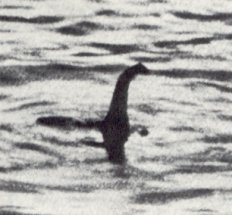
Truth or fiction, Loch Ness still draws curious onlookers for a chance to see a monster. There seems no shortage of new films, videos and witness testimonies of this elusive creature.
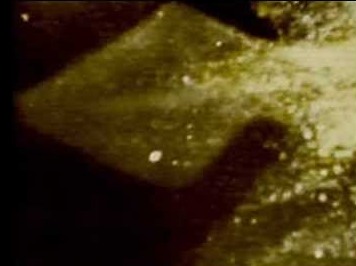
Some accounts of the monster's appearance, including historical
accounts, indicate a resemblance to the extinct Plesiosaurus. From the
available material of this Mesozoic creature, a large, long-necked,
small-headed animal that propels itself with fins can be constructed.
The supposed connection between Plesiosaurus and the Loch Ness monster
has become a well-known topic in cryptozoology. But most scientists, as
well as the vast majority of serious cryptozoologists, consider the idea
that the Loch Ness monster is a Mesozoic remnant to be very unlikely: a
large colony of such animals would have to exist to ensure long-term
existence. Since plesiosaurs, being reptiles, have to come to the
surface to breathe, this would result in far more frequent sightings
than is actually the case. Many biologists also believe that Loch Ness
is not large or productive enough to support even a small family of
these animals. Many other reasons, such as the geological formation of
Loch Ness after the last glacial period, clearly speak against a large
reptile in the lake.
Other sightings do not match the appearance
of the plesiosaurs or any other aquatic animal: In April 1923, Alfred
Cruickshank claimed to have seen a ten-foot-long animal with a curved
back and four elephant-like feet crossing the road in front of his
vehicle. Other putative sightings are more indicative of camel- or
horse-like animals.
Scientific attempts to explain the sightings
of monsters vary widely: misidentifications of seals, fish jumping or
swimming close to the water surface, waterfowl, logs, mirages or unusual
wave patterns, the latter because Loch Ness is predestined for standing
waves (so-called seiches) due to its symmetrical topography ) is.
Swimming deer could also account for some sightings of the monster with
its neck sticking out of the water. It is likely that each of these
explanations has contributed to the monster myth that has long since
become a mass phenomenon.
In rivers near Loch Ness there are very
large sturgeons that could easily be mistaken for monsters because of
their size and unusual appearance. A new theory says the monster is just
a hallucination caused by gushing water caused by minor volcanic
activity at the bottom of the hole. This argument is supported - to a
small extent - by the fact that there appears to be a connection between
the sightings and tectonic movements.
More recent extensive DNA
analyzes of the organic material from the lake confirm the assumption
made in research circles as early as 1933 that the sightings were most
likely larger eels.
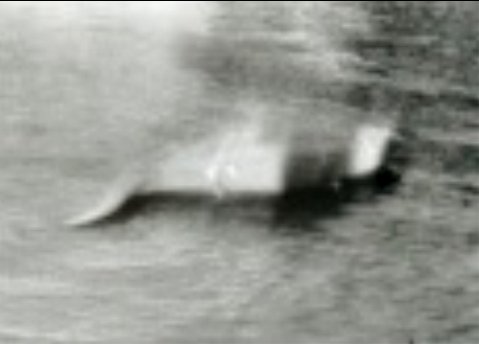
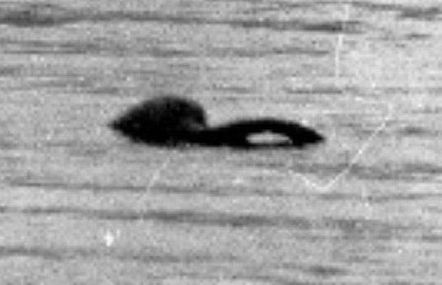
Arguments against the existence of the monster
A typical case of an
alleged sighting with unsatisfactory "facts" about Nessie is the case of
October 1871: In this event, D. Mackenzie described something that was
first moving slowly and then receding at a faster speed. Witnesses said
the monster has a (sometimes not just one) hump that looks like an
upside down boat. This story is repeated many times, but no original
source from 1871 is ever cited, which puts the articles in a bad light.
In July 2003, the BBC reported that an extensive survey of Loch Ness
carried out by a BBC team using 600 sonar beams found no sign of a "sea
monster". The BBC team concluded their report by saying Nessie didn't
exist.
The famous 1934 photo is believed by some to be a fake,
based on testimony given by photographer Marmaduke Wetherell shortly
before his death. Wetherell claimed the photo, which garnered the
monster a lot of attention, was all clay taped to a toy submarine. Even
before Wetherell's statements, some had speculated that the photo did
not show a monster at all, but rather several otters following one
another or a diving bird. However, there are two photos from 1934 that
show slightly different poses, leading to the argument that the photos
were not faked in this way. On the other hand, it should also be
considered here that the pose of a model made of clay or plasticine can
be slightly modified very easily, giving the impression of a series of
movements.
The latest explanation for the 1933 and 1934 photos
comes from Scottish paleontologist Neil Clark. In his opinion, the
animal depicted in the photos was nothing more than a swimming elephant
from the Olympia circus. The circus director at the time, Bertram Mills,
even put up a £20,000 bounty on his head, knowing full well that the
"monster" was in his circus.
The sometimes very different
depictions of Nessie also speak for deceptions or falsifications in many
sightings and photographs. Sometimes the popular long-necked
'Plesiosaurus' type is 'seen', sometimes also the no less popular
vertical-coiling 'humped sea snake' type, both of which are entirely
different. Of all vertebrates, only a few mammals, such as whales and
otters, move with vertical motion, but not a single species, living or
extinct, would be able to create multiple consecutive humps above the
water surface like the "humpback sea snake" when swimming.
In
this context it is worth mentioning that the first reports that Nessie
resembled a Plesiosaurus date back to 1933. It wasn't until this year
that Nessie really got famous. This year's sighting was made shortly
after the release of the film The Fable of King Kong. The resemblance of
the figure of Nessie described later is striking with a creature that
attacks the main characters of the film at a lake in the jungle. Given
that alien creatures were a lot easier to impress viewers then than they
are now, it's easy to see how a little-known rumor about a creature that
lives in Loch Ness could be compared to the creature depicted in the
film connected and thus created an extremely effective and lucrative
legend.
Arguments for the existence of the monster
The
sightings and video footage (see #History of Alleged Sightings) are
indicative of the existence of a large creature in Loch Ness, however
most photographs and footage have been identified as forgeries or
misinterpretations.
